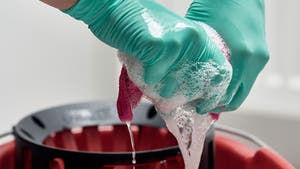About the HICPAC Blog Series
The Healthcare Infection Control Practices Advisory Committee (HICPAC) is a federal committee that provides guidance on infection prevention practices in US to the federal Department of Health and Human Services and the Centers for Disease Control and Prevention (CDC) in US healthcare settings. As Infection Preventionists, we are all familiar with the HICPAC guidelines including, but not limited to, the Hand Hygiene and the Environmental Infection Control Guidelines. HICPAC meets several times each year, where among other activities, new guidelines are developed and older guidelines are updated. This blog series will highlight the key discussions at these meetings. Because of the lengthy delay from meeting to posting of the minutes, we hope you will find our HICPAC meeting summary blog posts helpful to keep you informed in a timely manner.

Introduction
In this review of the June 3 2021 meeting, I’ll highlight updates from the Division of Healthcare Quality Promotion (DHQP), the Long-Term Care/Post-Acute Care (LTC/PAC) workgroup, and the Healthcare Personnel Guideline workgroup. Additionally, a draft of the Enhanced Barrier Precautions (EBP) whitepaper was reviewed and a new workgroup to look at transmission-based precautions was kicked off. Over the past year and half, the Committee typically provides a brief status of the pandemic. Interestingly, no COVID-19 update was provided.
DHQP Update
This country’s response to the pandemic is a reflection of how fragile our current systems are. Denise Cardo, MD and director of the DHQP shared what they are working on to address the healthcare challenges which have been highlighted by the COVID-19 pandemic. These include:
- Infection Prevention & Control (IP&C), including the critical needs in PAC,
- Early detection and management,
- Treatment delivery,
- Survivor’s quality of life,
- Protecting healthcare workers,
- Health equity, diversion, inclusion, and access to care,
- Public health-healthcare connection,
- Sustainable programs, and
- Reassess transmission-based precautions “because the pathogens don’t read the book.”
As an Infection Preventionist, I am elated that the CDC will address the long over-due needs in for robust IP&C in this countries nursing homes.
Healthcare Personnel Guidelines Workgroup Update
The Healthcare Personnel Guideline was first written in 1998 and addresses health and safety in the workplace for healthcare workers including exposures and illnesses1. The updates to this guideline which have been underway for the past ten years continues. There were no public comments made to the revisions to the four pathogens (pertussis, meningococcal disease, diphtheria, and Group A Streptococcus) posted back in March so these are ready to be posted. Next on deck to watch for public comment period are:
| Bloodborne pathogens | Herpes Simplex | S. aureus (MSSA/MRSA) |
| Conjunctivitis/Adenovirus | Parvovirus | Tuberculosis |
| Cytomegalovirus | Rabies | Viral Respiratory Infections |
| Hepatitis A | Scabies and Pediculosis |
LTC/PAC Workgroup Update
The awaited first draft of the Enhanced Barrier Precautions (EBP) Whitepaper was shared in the meeting. EBP is a targeted approach to prevent Staphylococcus aureus and MDRO transmission during resident care activities for residents with wounds or indwelling medical devices –regardless of MDRO colonization or infection status. Effective implementation of EBP requires staff training on the proper use of personal protective equipment (PPE) and the availability of PPE with hand hygiene products at the point of care. The whitepaper will address the following:
- Implementation approaches,
- Cost consideration,
- Considerations during shortages of PPE, and
- Unresolved questions such as decolonization strategies.
In the event of PPE shortages, EBP should be prioritized for residents with wounds over those with devices alone and for targeted MDROs. Neither the workgroup nor HICPAC indicated when the final Whitepaper will be published.
New HICPAC Workgroup Kicked Off
Finally, Michael Bell, Deputy Director of DHQP and the designated federal officer over HICPAC, announced the formation of a new workgroup to evaluate new approaches to transmission-based precautions. He challenged the committee to consider if there is value in a gradient approach to isolation precautions – similar to EBP. The pandemic has provided the opportunity to update the guidance and has driven some research on how they are thinking about this. Source control will be a very important element of the updated guidance, as will new masks and air quality. Will droplet precautions look differently going forward? We will have to wait to see the hierarchy of controls that this new workgroup will bring forward in coming months.
Summary
The June HICPAC meeting was very productive with lots of important work happening. Be sure to watch for public comment periods on HICPAC guidelines in review as well as for the final EBP Whitepaper. For additional information the HICPAC meeting minutes can be reviewed once they are posted. I hope that you find these meeting summaries helpful in your day-to-day practice.
References
1. CDC. (2019). Infection Control in Healthcare Personnel: Infrastructure and Routine Practices for Occupational Infection Prevention and Control. Retrieved on 23 June 2021 from https://www.cdc.gov/infectioncontrol/guidelines/healthcare-personnel/index.html


